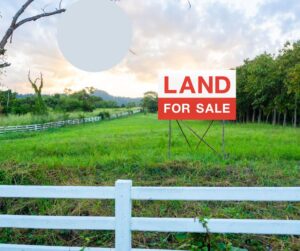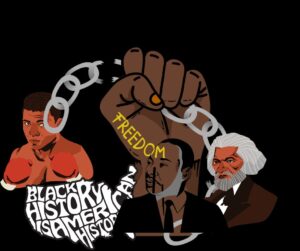Once upon a time in Black Entrepreneur History was an African man named Broteer, born son of Saungm Furro who was Prince of the tribe of Dukandarra, from a location in Dukandarra, Guinea of the 1700s. (Map)
Broteer went on to become known as Venture Smith after he was sold into slavery and named Venture because his first slave owner bought him “with his own private venture” while on board a ship that carried him and 250 others across the ocean to the island of Barbados first and then to Rhode Island, United States of America. Smith became his last name from the last man who he was enslaved under and from whom he purchased his own freedom.
According to Broteer’s own autobiography titled A Narrative and Life of VENTURE, a Native of Africa: But Resident Above Sixty Years in the United States of America, he had been sold three times – first to Robertson Mumford (NY), second to Thomas Stanton (CT) and third to Colonel Oliver Smith.
Childhood in Africa
Broteer was born in or about 1729. When he was only 5 years old, Broteer’s parents were in a feud due to his father marrying a third wife without her consent being that she was the first wife. As a result of the disagreement, his mother left his birth home with her own three children – Broteer and his younger full blood siblings named Cundazo and Soozaduka.
His mother decided to go back to her home country which was well over 150 miles away. On foot, Broteer and his mother went as she carried his younger two siblings on her body. They traveled East and ate various vegetables and fruits that the earth produced on their journey, that was even through desert land until they reached a land that Broteer described as “beautiful” in his autobiography, with a large river that ran through it, so that even though it rarely rained, the land was still very fertile because of the heavy morning dew.
In this beautiful place, Broteer was left to be cared for by a rich farmer while she continued on with his siblings to her home country. This new home was about 150 miles from where he was born. Broteer now had a new guardian who taught him and put him to work, doing normal chores with another boy who lived there as well. One of the chore both of the boys did was tend to the sheep.
One day when they tended to the sheep, two wild dogs appeared out of nowhere, and attacked a young Broteer, on his arm and leg. The other boy ran to get help, and young Broteer was rescued by his guardian. The scars from the attack were permanent.
Very soon after the attack, Broteer’s real father was contacted and he went back to live with him in his birth home. When he got home, he was happy to have found his mother also there once again. His parents were back together again. He was six years old at this time, having spent one year away from home.
It was a good thing that he’d left the guardian’s home when he did after the attack, because soon after, the guardian’s home was attacked by a nation of people who were paid by white men to do so. Everyone before then in the area lived together peacefully, so no one was prepared for the massive attacks ahead.
Soon after his old guardian’s home was attacked, the dangers were headed to his family’s home country, and they had to escape or risk losing everything. Quickly, they left, his father in one group, and Broteer’s mother, him and his siblings behind them.
They all hid in the shrubbery to rest and cook, but as they put out the fire, the smoke led the enemies right to them. A fight ensued, a fight that included bows and arrows, but as he watched his father fight, he also ended up watching his father surrender. He surrendered to a larger nation of men being led by a man named Baukurre.
Six year old Broteer watched in horror as they tortured his father viciously because his father refused to lead the men to his wealth. They beat him and beat him, but his father refused to reveal anything. He preferred death over it, and that was what he got. In 1735, his father died as a captured Broteer, already hit over the head with a gun, watched with rope around his own neck. His mother and other family were captured as well.
It was then that little Broteer was forced to do whatever the enemy ordered him and the others to do. They continued traveling West toward the ocean on foot, and whenever he was commanded, he had to help steal, capture food, wealth and people, no matter what the age. When they finally reached their destination in Anamaboo, they were transferred into a large castle and kept to market. That castle was located at the Gold Coast, known today as the country of Ghana. (MAP)
Victim of the TransAtlantic Slave Trade & Name Change
In a quote from his autobiography:
“On a certain time, I and other prisoners were put on board a canoe, under our master, and rowed away to a vessel belonging to Rhode Island, commanded by Captain Collingwood, and the mate, Thomas Mumford. While we were going to the vessel, our master told us to appear to the best possible advantage for sale. I was bought on board by one Robertson Mumford, steward of said vessel, for four gallons of rum and a piece of calico, and called VENTURE, on account of his having purchased me with his own private venture. Thus I came by my name. All the slaves that were bought for that vessel’s cargo were two hundred and sixty.” [Source]
Life in America
He was 8 years old in 1737 when he was to Fisher’s Island in Rhode Island and made to work as a house hand in slave owner Robertson Mumford‘s house. At first, he was given easier tasks when he was younger, but then after working for years in the house, he was sent to work as an older young man in the fields outside. The rules became harsher and so did the work. If he didn’t do what he was told, he would be severely punished, especially when it came to his slave owner’s son, James Mumford.
It was James Mumford who attacked Venture with a pitchfork, and if it wasn’t for Venture defending himself easily, having grown into a large and tall young man like the people of his African nation, he would have been killed. Right afterwards, he was bound up by three men, having fought them all first, but finally to allowing them to tie him up. Then, he was taken to the gallows to be beat with three dozen whips. Venture hanged there for one hour and immediately had to go back to work upon release.
In the year 1751 when Venture was 22 years of age, he married a woman who was also enslaved named Meg. He loved her very much, but ended up being talked into escaping from slave owner Mumford by an Irish indentured servant named Heddy. That was when Venture went along with Heddy and two others who were enslaved, stole slave owner Mumford’s boat and headed for the Mississippi River.
They stopped to rest in Montauk Point near Long Island, but when they got there, he and Heddy went to get fresh water while the others parted away from the boat to cook. Heddy then left Venture to go back to the boat, and that was where Heddy took all the belongings of the others and ran off, leaving them there. Once Venture heard what happened, he scolded the others for not protecting their items and sent them after the Irishman Heddy.
The two found him and brought him back to the boat where they decided with Venture to return to slave owner Mumsford and blame Heddy for everything, for convincing them to leave the plantation. This way, Venture would spare a grave punishment from running off, knowing how dangerous it would be if they were caught due to laws on runways. Returning with Heddy to blame may even save his own life.
As soon as they returned and told Mumsford what happened, blaming Heddy for convincing them to leave, Heddy was put in prison. Shortly after that however, Venture was sold off, torn from his wife and newborn and only daughter to a man named Thomas Stanton in Stonington Point, Connecticut. At the time he was sold, he’d amassed “three Spanish dollars, two thousand coppers and five pounds of his wife’s money“. He’d earned all of his money through working odds and ends like cleaning shoes, catching minks and muskrats and fishing at odd hours of the night and farming. It all added up to 21 pounds in NY currency.
This was the start of Venture’s entrepreneurship as he needed and wanted to earn money for himself, and he was willing to work outside of slave labor to do it.
Soon after, Stanton purchased Venture’s wife and child, and while his wife and child were with him there, trouble brewed. While he worked in the barn, he heard bad noises coming from inside the house. When he went to go check on everything, he found Stanton’s wife fighting his own wife Meg. When he tried to break up the fight, Stanton’s wife grabbed a whip to hit him with it, but being a strong man, snatched the whip from her and tossed it in the fire.
When slave owner Stanton got home, he knocked Venture over the head with a club after hearing about the incident, catching him off guard, leaving a permanent scar. At the second blow, Venture caught the club and slave owner Stanton and dragged him outside the door, being the bigger, stronger man. He then went to complain to the justice, but his complaints about how he was mistreated went mostly unheard.
That was when he was ordered back on foot into servitude to the Stanton house, as both Stanton and his son rode on horseback, one in front of him and the other in back, so that he had nowhere to run. When they got him to a place where they could dismount their horses and beat him, they did. According to Venture, he fought back:
“When they had come to a by-place, they both dismounted their respective horses and fell to beating me with great violence. I became enraged at this and immediately turned them both under me, laid one of them across the other, and stamped them both with my feet what I would.”
After this, he was handcuffed by other men, and he returned to his slave owner’s house where he faced the man’s wife. He angered his slave owner’s wife when he sarcastically thanked her for the “gold rings”, in other words the cuffs on his arms. At that remark, her husband Stanton had him padlocked at the ankles, and he remained chained up like that for three whole days. He was then given an ultimatum, straighten up and work or be sent away to the West Indies, to which Venture responded strongly:
“I crossed the waters to come here and I am willing to cross them to return.” [Source]
His Freedom
After multiple events after that, he ended up with Colonel Smith as his slave owner at 31 years old. He continually petitioned Smith for his freedom until he finally earned enough money by working around the clock, even hiring himself out, in order to save enough money to put with the money he buried to buy his freedom.
He, after earning enough money, finally bought his freedom from Smith at 36 years old, after getting permission to hire himself out for work and working at any opportunity he got outside of the labor he did for Smith.
He was finally free, but he had to get the rest of his family from slave owner Stanton in Connecticut somehow, so he continued to work hard, even after most of his belongings were burned to the ground. He didn’t spend hardly one dime because he thought any luxuries weren’t worth his goals of freeing his family. Therefore, he continued living frugally until he was able to secure his two sons from Stanton for two hundred dollars a piece, earned from cutting wood for four whole years. Their names were Solomon and Cuff. His sons were finally free with him.
Solomon was at about 17 years old when Venture got him a job with a man where Solomon could learn. This backfired when the man convinced Solomon to go out to sea with him in exchange for silver buckles in addition to money. Solomon went, and Venture was devastated at the decision that his son had made when he got word of it. He ran out to get his son, but was too late. They were already out to sea, and his son never made it back. Solomon, his oldest son, caught scurvy and died while at sea. He never saw his son again.
At this time, through the loss of his son, he continued working with his other son, Cuff. Venture was a full fledged business man now that he was free, chartering a sailboat and workers in order to help him navigate for his wood business. It was then at 44 years old that he was able to purchase his wife Meg’s freedom who was pregnant again, for 40 pounds. His next child would be born automatically free because Meg was now free.
Venture was also in the watermelon and fishing business to where he would grow carts of watermelon to sell. Between that and fishing he was able to earn upwards of $500.
At 46 years old, he finally purchased the freedom of his first born – his daughter Hannah – from his first slave owner Mumford. He finally had his entire family besides Solomon who died at sea. In between his time freeing his family, he also hired three Black men, after buying their freedom, who ended up leaving him, stealing items from him as well.
Venture had become not only a self-employed business man, earning money from what he knew how to do with his hands, but he was also a man who had enough money to hire paid employees.
After the purchase of his daughter, he moved to East Haddom, Connecticut after selling his land in NY. At age 47, after moving and working for two men, he earned enough extra money to by 80 acres of land and paid with it from what he produced off of his other land. From there, he build his farm and life was prosperous now that he had his entire family.
However, his daughter Hanna married a free black man named Issac whom he detested because when his daughter became gravely sick, Issac didn’t care for her as he should. Therefore, he brought Hanna to his home and spent money and time to care for her as best he could during an awful unknown illness. She (Hanna) passed away. She had no children.
At 54 years old, he hired more workers to help him but they also robbed him, but he continued working as that was all Venture had ever done from the time he was six years old. He was a survivor, and he would survive through entrepreneurship despite the odds.
Old Age
At 69 years of age, he documented that he was no longer young, going blind, no longer standing tall and strong but buckled over and with a staff, needing his grandchildren to lead his way.
In his autobiography, he stated:
“But amidst all my griefs and pains, I have many consolations; Meg, the wife of my youth, whom I married for love and bought with my money, is still alive. My freedom is a privilege which nothing else can equal. Notwithstanding all the losses I have suffered by fire, by the injustice of knaves, by the cruelty and oppression of false-hearted friends, and the perfidy of my own countrymen whom I have assisted and redeemed from bondage, I am now possessed of more than one hundred acres of land, and three habitable dwelling houses. It gives me joy to think that I have and that I deserve so good a character, especially for truth and integrity.“
Death
Venture died at the age of 77 on September 19, 1805, decades before the Emancipation Proclamation, having fought to get and maintain his freedom. His grave slab reads: “Though the son of a King, he was kidnapped and sold as a slave, but by his industry he acquired money to purchase his freedom.“
His wife, Meg, died four years later at the age of 79, buried next to him.
Their son Cuff became a soldier in the Revolutionary War in 1781.





More Related Stories
Isaac Scott Hathaway – Founder of Isaac Hathaway Art Company & Designer of First African American Coin
James Wormley – Founder of the Most Expensive Hotel in Washington D.C. in 1800s – the Wormley Hotel
William E. Matthews – Wealthy Financial Broker & Civil Rights Leader of 1800s